Siberian Federal District
Siberian Federal District
Сибирский федеральный округ | |
|---|---|
.svg.png.webp) Location of the Siberian Federal District | |
| Country | |
| Established | 18 May 2000 |
| Administrative centre | Novosibirsk |
| Government | |
| • Presidential Envoy | Anatoly Seryshev |
| Area | |
| • Total | 4,361,800 km2 (1,684,100 sq mi) |
| • Rank | 2nd |
| Population (2010) | |
| • Total | 17,178,298[2] |
| • Rank | 3rd |
| • Density | 3.8/km2 (10/sq mi) |
| Time zones | |
| Omsk Oblast | UTC+06:00 (Omsk Time) |
| most of the district | UTC+07:00 (Krasnoyarsk Time) |
| Irkutsk Oblast | UTC+08:00 (Irkutsk Time) |
| Federal subjects | 10 contained |
| Economic regions | 2 contained |
| HDI (2019) | 0.796[3] high · 7th |
| Website | SFO.gov.ru |
| = | |
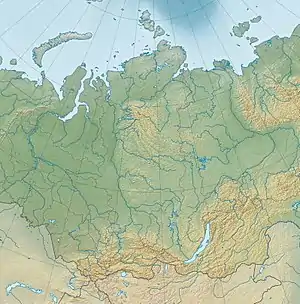
Siberian Federal District (Russian: Сиби́рский федера́льный о́круг, Sibirsky federalny okrug) is one of the eight federal districts of Russia. Its population was 17,178,298 according to the 2010 Census,[2] living in an area of 4,361,800 square kilometers (1,684,100 sq mi).[1] The entire federal district lies within the continent of Asia.

The district was created by presidential decree on 13 May 2000 and covers around 30% of the total land area of Russia.[4] In November 2018, Buryatia and Zabaykalsky Krai were removed from the Siberian Federal District and added to the Far Eastern Federal District in accordance with a decree issued by Russian President Vladimir Putin.[5]
Demographics

Federal subjects
The district comprises the West Siberian (part) and East Siberian economic regions and ten federal subjects:
.svg.png.webp) | |||||||
|---|---|---|---|---|---|---|---|
| # | Flag | Coat of Arms | Federal subject | Area in km2[1] | Population (2021) | Capital/Adm. center | Map of Administrative Division |
| 1 |  |
Altai Republic | 92,900 | 210,924 | Gorno-Altaysk | ||
| 2 | 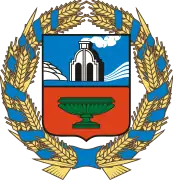 |
Altai Krai | 168,000 | 2,163,693 | Barnaul | ||
| 3 | 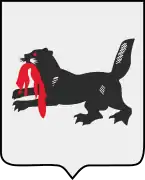 |
Irkutsk Oblast | 774,800 | 2,370,102 | Irkutsk |  | |
| 4 | 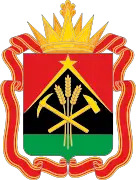 |
Kemerovo Oblast | 95,700 | 2,600,923 | Kemerovo | 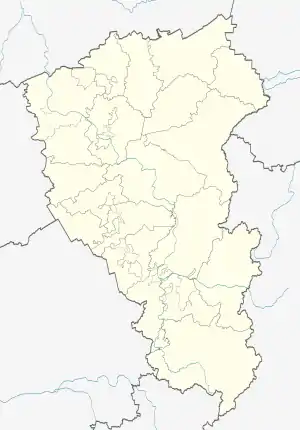 | |
| 5 | 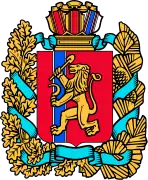 |
Krasnoyarsk Krai | 2,366,800 | 2,856,971 | Krasnoyarsk |  | |
| 6 | 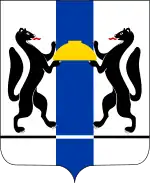 |
Novosibirsk Oblast | 177,800 | 2,797,176 | Novosibirsk | ||
| 7 | 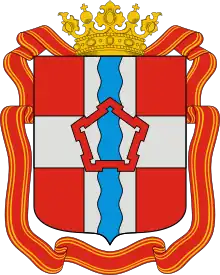 |
Omsk Oblast | 141,100 | 1,858,798 | Omsk |  | |
| 8 | 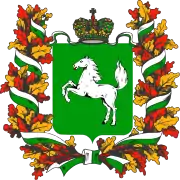 |
Tomsk Oblast | 314,400 | 1,062,666 | Tomsk | ||
| 9 | 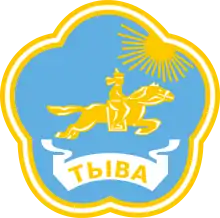 |
Tuva Republic | 168,600 | 336,651 | Kyzyl | ||
| 10 | 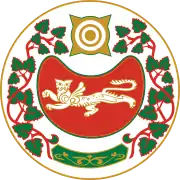 |
Republic of Khakassia | 61,600 | 534,795 | Abakan | 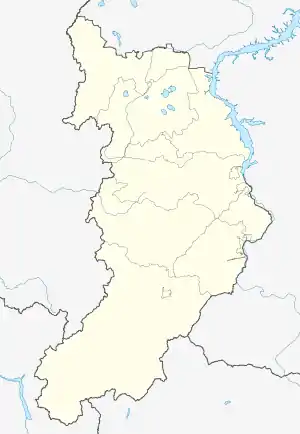 | |

Religion and ethnicity
According to a 2012 survey,[6] 28.9% of the population of the current federal subjects of the Siberian Federal District (excluding Buryatia and Zabaykalsky Krai) adheres to the Russian Orthodox Church, 5.2% are unaffiliated generic Christians, 1.9% is an Orthodox believer without belonging to any church or adheres to other (non-Russian) Orthodox churches, 1.4% is an adherent of Islam, 1.2% is an adherant of Buddhism, and 1.6% adhere to some native faith such as Rodnovery, Tengrism, or Tuvan Shamanism. In addition, 33.2% of the population declares to be "spiritual but not religious", 18.7% is atheist, and 7.9% follows other religions or did not give an answer to the question.[6]

Ethnic composition, according to the 2010 census:
- Total – 19,256,426
- Russians – 16,542,506 (85.91%)
- Buryats – 442,794 (2.30%)
- Tuvans – 259,971 (1.35%)
- Ukrainians – 227,353 (1.18%)
- Tatars – 204,321 (1.06%)
- Germans – 198,109 (1.03%)
- Kazakhs – 117,507 (0.61%)
- Altaians – 72,841 (0.38%)
- Khakass — 70,859 (0.37%)
- Armenians – 63,091 (0.33%)
- Azerbaijanis – 54,762 (0.28%)
- Belarusians – 47 829 (0.25%)
- Uzbeks – 41,799 (0.22%)
- Chuvash – 40,527 (0.21%)
- Tajiks – 32,419 (0.17%)
- Kyrgyz — 30,871 (0.16%)
- Mordva – 19,238 (0.10%)
- Roma – 15,162 (0.08%)
- Bashkirs – 12 929 (0.07%)
- Shors – 12 397 (0.06%)
- Koreans – 11,193 (0.06%)
- Moldovans – 11 155 (0.06%)
- Evenks – 10,243 (0.05%)
- Jews – 9,642 (0.05%)
- Mari – 9,116 (0.05%)
- Chinese — 9,075 (0.05%)
- Udmurts – 8,822 (0.05%)
- Poles – 8,435 (0.04%)
- Georgians – 7,884 (0.04%)
- Estonians – 7,112 (0.04%)
- Dolgans – 5,854 (0.03%)
- Persons who did not indicate nationality – 561,206 (2.91%)
Presidential plenipotentiary envoys
- Leonid Drachevsky (18 May 2000 – 9 September 2004)
- Anatoly Kvashnin (9 September 2004 – 9 September 2010)
- Viktor Tolokonsky (9 September 2010 – 12 May 2014)
- Nikolay Rogozhkin (12 May 2014 – 28 July 2016)
- Sergey Menyaylo (28 July 2016 – 9 April 2021)[8]
- Anatoly Seryshev (from 12 October 2021)[9]
See also
References
- "1.1. ОСНОВНЫЕ СОЦИАЛЬНО-ЭКОНОМИЧЕСКИЕ ПОКАЗАТЕЛИ в 2014 г." [MAIN SOCIOECONOMIC INDICATORS 2014]. Regions of Russia. Socioeconomic indicators - 2015 (in Russian). Russian Federal State Statistics Service. Retrieved July 26, 2016.
- Russian Federal State Statistics Service (2011). Всероссийская перепись населения 2010 года. Том 1 [2010 All-Russian Population Census, vol. 1]. Всероссийская перепись населения 2010 года [2010 All-Russia Population Census] (in Russian). Federal State Statistics Service.
- "Sub-national HDI - Area Database - Global Data Lab". hdi.globaldatalab.org. Retrieved July 20, 2021.
- "Siberia Federal District, Russia (Siberian)". RussiaTrek.org. Retrieved July 15, 2012.
- "Официальный интернет-портал правовой информации". publication.pravo.gov.ru. Retrieved November 4, 2018.
- "Arena: Atlas of Religions and Nationalities in Russia". Sreda, 2012.
- 2012 Arena Atlas Religion Maps. "Ogonek", № 34 (5243), August 27, 2012. Retrieved April 21, 2017. Archived.
- "Путин освободил Меняйло от должности губернатора Севастополя" (in Russian). Echo of Moscow. July 28, 2016. Retrieved July 28, 2016.
- "Путин назначил Серышева полпредом в Сибирском Федеральном округе" [Putin appointed Seryshev Plenipotentiary in the Siberian Federal District]. Izvestiya (in Russian). October 12, 2021.